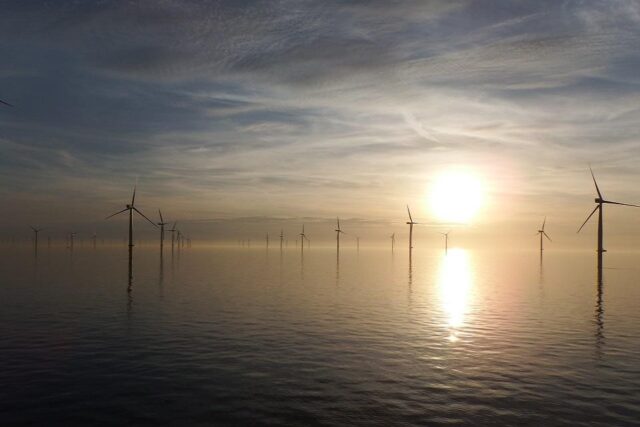
02 Aug Natural sources of renewable energy
Energy is in the bull’s eye of efforts at climate change mitigation. Globally, the energy sector is currently undergoing significant systems-wide transition and transformation driven by the inevitable shift to renewables as alternatives to fossil fuels. This is an irreversible response to the requirement of achieving net zero in 2050 as stipulated by the Paris Agreement. Until concerns about the government’s commitment to net zero recently grew louder, the UK had led the way in the race to meet global climate change obligations. Solar, wind, and hydropower are renewable energy alternatives already embraced.
The sunshine source
Solar power has become a remarkable success story in the energy transition mix. The technology harnesses the sun’s energy through photovoltaic cells by converting sunlight directly into electricity. This advancement in photovoltaic (PV) technology is proven not only to be climate-friendly but also cost-effective over time. Amidst energy security concerns and costs, there has been notable adoption of solar installations in the UK. A 2022 BBC report revealed that over 3,000 solar installations were taking place weekly, up from 1,000 per week in July 2020. Also, both residential and commercial solar installations have become increasingly common across the UK, with solar panels adorning the rooftops of various buildings. Solar farms in rural areas have also contributed to harnessing solar energy on a larger scale. The UK government’s commitment to renewable energy, supported by subsidies and financial incentives, has been instrumental in fostering the growth of solar power. Subsidies, feed-in tariffs, and other financial incentives such as the Feed-in Tariffs (FITs) scheme – which pays energy users who invest in small-scale, low-carbon electricity generation systems for the electricity they generate and use and for unused electricity they export back to the grid have encouraged homeowners and businesses to invest in solar installations, accelerating the transition to clean energy. There are, however, challenges that remain in the widespread adoption of solar power. The intermittent nature of solar energy and the need for effective energy storage solutions require attention. To address these issues and enhance solar power’s reliability, there is a need to rev up investments in energy storage technologies like battery and pumped hydro storage. Despite the challenges, the potential for solar power is significant. By implementing suitable policies and investments, solar energy can play a crucial role in meeting global energy demands. Integrating solar power with other renewable sources such as wind and hydropower, can further enhance the overall energy system’s reliability and flexibility. Governments worldwide have also contributed to the growth of the solar industry through incentives like tax breaks and subsidies.
The ‘windfall’ effect
Wind power has become a crucial element of the energy transition with offshore wind farms emerging as the highlight of the UK’s renewable energy infrastructure. The UK has attained this success alongside other wind power giants like Denmark and Germany, all of whom have made substantial strides in harnessing its power. The UK has been able to achieve this stride thanks to its advantageous geography, surrounded by seas providing the country with strong and consistent winds. Having some of the most offshore installations and seven of the world’s ten largest offshore wind sites, the UK can be said to have attained recognizable success in harnessing this potent energy source and accelerating the energy transition. According to a US International Trade Administration Offshore report, wind power presently accounts for approximately 13% of the UK’s electricity mix, with the country possessing an impressive 12.7 GW of connected offshore wind energy distributed across 44 wind farms, encompassing over 2,500 turbines. In 2021 alone, the UK successfully installed over 2.3 GW of new offshore wind capacity, representing 70% of total installations in Europe for that year. Moreover, the UK government’s data indicated that offshore wind’s share of the annual UK generation has grown from 0.8% in 2010 to 6.2% in 2017, and it was projected to reach around 10% by 2020. This progress did not only contribute to the expansion of renewable energy but also generated skilled, fulfilling, and well-paid job opportunities in communities throughout the country, with more than 430,000 jobs in low-carbon business supply chains and 7,200 direct employment in the offshore wind industry.

Source: UK Gov
The water rush
Hydropower, one of the first types of renewable energy, is still an important component in today’s world. Despite not having strong patronage as solar and wind power, hydropower has nonetheless contributed to the UK’s renewable energy options. Since 1879 when the first 4.5 KW hydroelectric generator was installed to power a single incandescent lamp, the kingdom has been at the forefront of hydropower development, harnessing water for electricity generation. Today, the UK boasts an impressive total installed hydropower capacity exceeding 4,700 MW, with more than 2,800 MW attributed to pumped storage. The majority of this capacity is situated in the wet and mountainous areas of Wales and northwest Scotland. Also, the country has been investigating the feasibility of small-scale hydropower projects, particularly the development of run-of-the-river hydroelectric plants. Although the UK has an estimated hydropower potential of 2.4 GW, the expansion of hydropower is expected to be restricted to these small-scale applications, typically up to 5 MW in size. These projects produce clean energy for local communities and industries while having a low environmental impact. They use the natural flow of rivers and streams to generate power, which is especially useful during peak demand periods.
A combination of nature
The UK’s renewable energy combination has led to the rise of clean and sustainable energy sources such as solar, wind, and hydropower. This t has reshaped the nation’s energy landscape, laying the groundwork for a greener and more sustainable future. The progress in renewable energy reflects the UK’s commitment to combat climate change and transition away from fossil fuels. However, challenges remain in the full potential of integrating hydropower with other renewable sources, which could create more opportunities to scale up the energy transition

Sorry, the comment form is closed at this time.